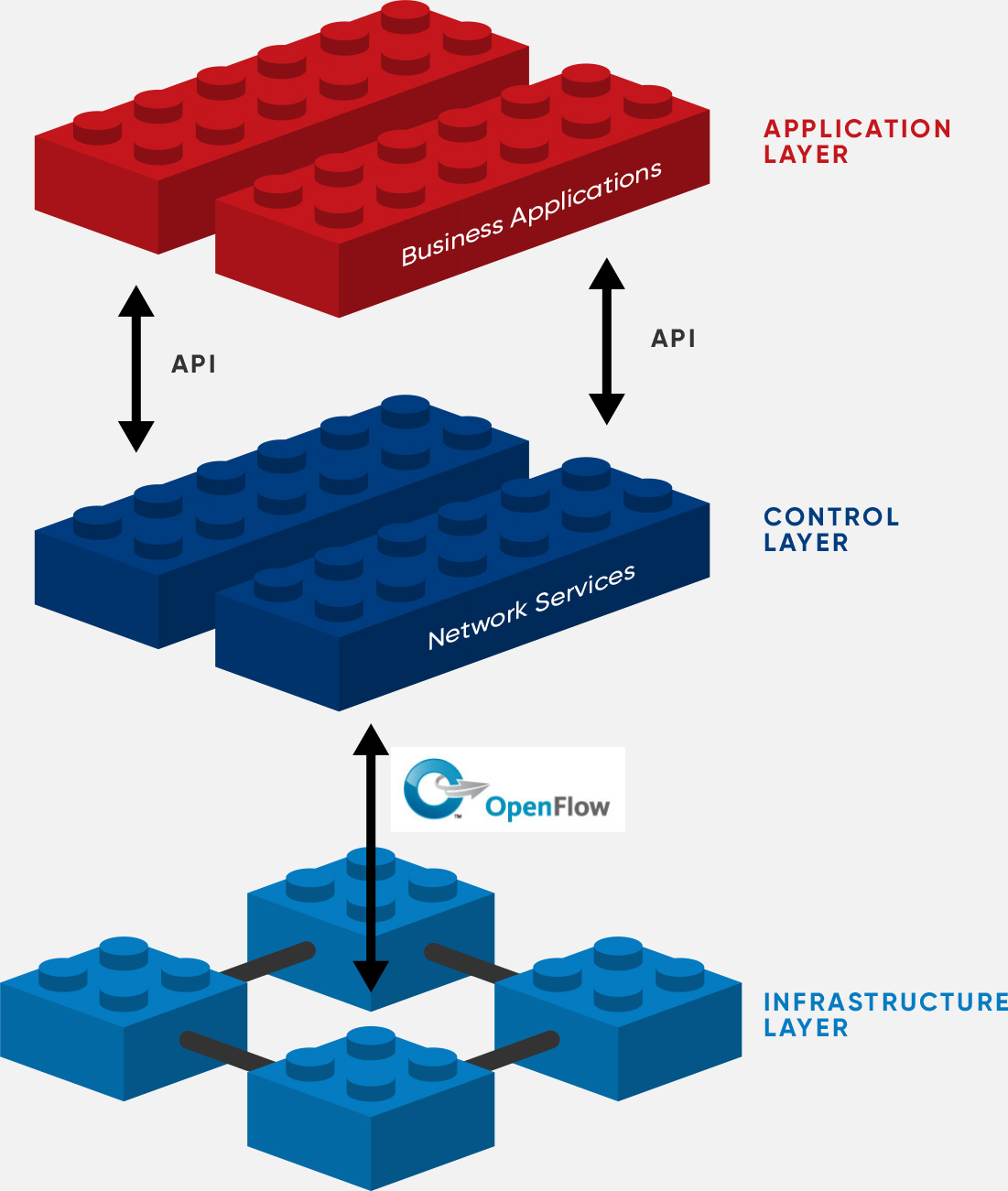Software-Defined Networking (SDN)
What is SDN?
The SDN Architecture is:
DIRECTLY PROGRAMMABLE
Network control is directly programmable because it is decoupled from forwarding functions.
AGILE
Abstracting control from forwarding lets administrators dynamically adjust network-wide traffic flow to meet changing needs.
CENTRALLY MANAGED
Network intelligence is (logically) centralized in software-based SDN controllers that maintain a global view of the network, which appears to applications and policy engines as a single, logical switch.
PROGRAMMATICALLY CONFIGURED
SDN lets network managers configure, manage, secure, and optimize network resources very quickly via dynamic, automated SDN programs, which they can write themselves because the programs do not depend on proprietary software.
OPEN STANDARDS-BASED AND VENDOR-NEUTRAL
When implemented through open standards, SDN simplifies network design and operation because instructions are provided by SDN controllers instead of multiple, vendor-specific devices and protocols.

There are four critical areas in which SDN technology can make a difference for an organization.
1) Network programmability: SDN enables network behavior to be controlled by the software that resides beyond the networking devices that provide physical connectivity. As a result, network operators can tailor the behavior of their networks to support new services, and even individual customers. By decoupling the hardware from the software, operators can introduce innovative, differentiated new services rapidly—free from the constraints of closed and proprietary platforms.
2) Logically centralize intelligence and control: SDN is built on logically centralized network topologies, which enable intelligent control and management of network resources. Traditional network control methods are distributed. Devices function autonomously with limited awareness of the state of the network. With the kind of centralized control an SDN-based network provides, bandwidth management, restoration, security, and policies can be highly intelligent and optimized—and an organization gains a holistic view of the network.
3) Abstraction of the network: Services and applications running on SDN technology are abstracted from the underlying technologies and hardware that provide physical connectivity from network control. Applications will interact with the network through APIs, instead of management interfaces tightly coupled to the hardware.
4) Openness: SDN architectures usher in a new era of openness—enabling multi-vendor interoperability as well as fostering a vendor-neutral ecosystem. Openness comes from the SDN approach itself. The open APIs support a wide range of applications, including cloud orchestration, OSS/BSS, SaaS, and business-critical networked apps. In addition, intelligent software can control hardware from multiple vendors with open programmatic interfaces like OpenFlow. Finally, from within the SDN, intelligent network services and applications can run within a common software environment.
A key advantage of SDN technology is the ability for network operators to write programs that utilize SDN APIs and give applications control over network behavior. SDN allows users to develop network-aware applications, intelligently monitor network conditions, and automatically adapt the network configuration as needed.



Nice one bro
ReplyDeleteExcellent💯👍
ReplyDeleteGood information 👍
ReplyDeleteGot the clear knowledge in SDN
ReplyDeleteImpressive work 👍
ReplyDeleteSuperb👌
ReplyDelete